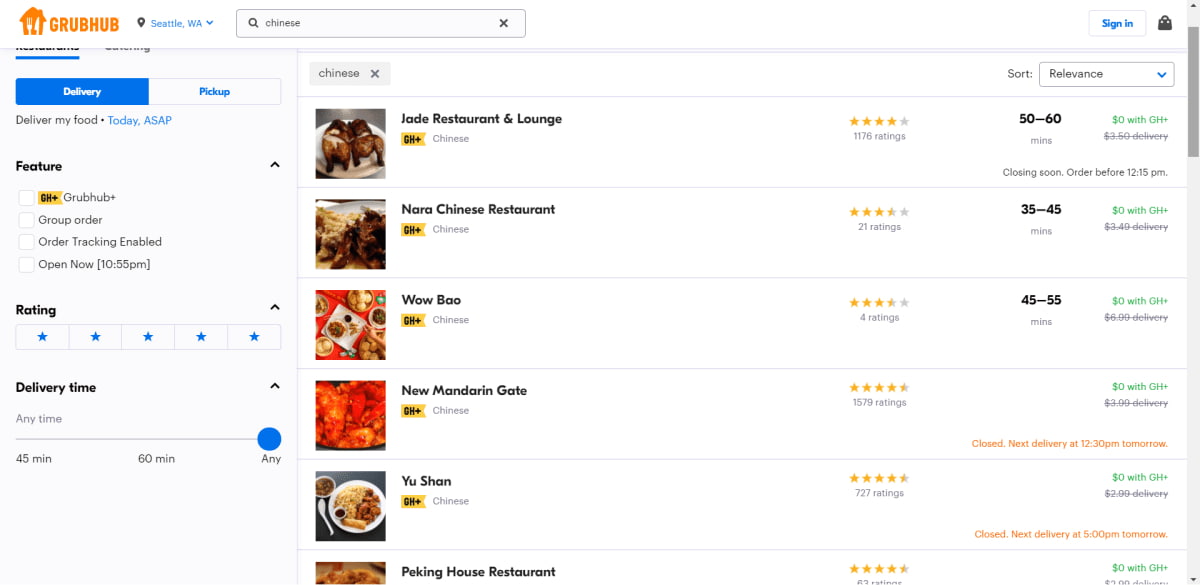Key Takeaways
Losing is an inevitable part of every business. Sometimes we lose our best employees to competitors. Sometimes we lose the most loyal customer. And other times the economical changes make us lose a lot of revenue opportunities. The pandemic only made things worse.
While it’s hard to control external factors that affect a restaurant business, there are certain internal decisions that we make that can flip the whole game of the business - to either side.
One of the most talked about decision patterns in the restaurant business is taking the route of third party apps or aggregators like Grubhub, UberEats, etc, to sell food online. It's a natural choice that restaurant owners make when they decide to start taking online orders. Most importantly the marketing position of these companies entices them into buying the idea of “no or low investment and high profits”, which we have established earlier, is one of the BIGGEST LIES that they promote.
Investment is certainly low as they don’t charge upfront payments to list the restaurant online, but with 30% or more as total commission on each order, the profits are really high, not for restaurants but for the aggregator provider, per say. Read more about this here.
But regardless of all the warnings floating on the internet, if you still decide to list your restaurant on third party apps of your choice, we’d like to enlighten you with a few aspects of the trade that would help you prepare better. Once you know what you’d be losing when you partner with the likes of GrubHub, you’ll be able to make informed decisions about the various aspects of restaurant operations that directly affect the bottom line.
4 things you lose when you use third party apps to sell food online
Your Brand
Have you ever gone through the yellow page book? It lists out all the businesses under different categories. All in all, they all look the same. We really need to dig deep into the pages to find the business that can serve the purpose. There’s no branding or color differentiator that makes one business stand out from the rest. The same is true for food aggregator websites.
They simply list out your brand among thousands of other restaurants serving the same kind of food. So if a customer searches for Chinese Food on the third party aggregator website, he’ll be directed to a page that would list out 100s of Chinese Restaurants in his/her area. The ones that are close to the delivery address would get top position while others in close proximity or little far away will find home right at the bottom of the page. Some won’t even be discoverable if the geo-location tagging hasn't been done properly in the backend.
But really, look at the screenshot shared below. Can you differentiate one brand from another? They all look just the same.
As a customer, I’ll just keep scrolling for the restaurant I have ordered from before. If it’s closed for delivery, then I’ll just seek out some recommendation from the friend close by or a colleague sitting next to me. Yes, reviews, they might help me a little if I don’t get any recommendations from people around. But branding? Not even a single restaurant is catching my attention. To me they are just food providers for the body that’s feeling hungry and needs some food!

Now let’s look at the screenshot below. It’s the restaurant website that not only reflects the brand personality, but also displays the mission and vision of the brand, along with clear “Order Online” CTA that wouldn’t go unnoticed for sure.
It has all the necessary elements that a brand should have to be able to gain customers’ attention. From brand logo to enticing food images, food experiences, locations, clear CTA to order online and even the Scan QR Code, there’s absolutely nothing at all that this website has missed.
As a customer looking for some chinese food, I will definitely try this restaurant for my Chinese Food Cravings.

.
Moral: Don’t just be a business name. Become a brand that your customers can fall in love with over and over again.
Looking for a branded online ordering system provider? Take a Free Demo today and get 40% off on a premium annual subscription plan.
Your Customers
How would you feel if you spent thousands of dollars on customer acquisition, but your marketing team refuses to share the customer data? Customer Acquisition and Retention is a most important part of any service industry. Not to mention, customer insights when used properly can help increase customer loyalty, unlock hidden profitability and reduce client churn
We thrive on customer loyalty. How would you ensure that you retain their loyalty for a long time
If you don’t know who and from where is a fan of your food, what they like, and frequency at which they order from your restaurant?
Third party aggregators are doing just that. They are not sharing the data of customers that place orders from your restaurant on their website. This data is as important as salt in your food. User data includes information regarding user location, demography, browsing habits, purchases and web searches. This information can be used to target tailored ads and promotions. By examining customer purchasing patterns and looking at the demographics, you can create dishes, or modify the menu that will sell better.
Third party food delivery services are blatantly capitalizing on customer data at the expense of their restaurant partners. While they use this data to optimize their digital ads and increase sales, restaurants are deprived of any reward or opportunity to establish strong connections with their current, as well as prospective customers!
Moral: Own your data. It’s a gold mine of wealth and profit making opportunities.
Your Reputation
If you’re not making deliveries, how can you be assured that the food reaching your customers is well received? Excellent customer experience is not just limited to preparing and packaging delicious meals. It should also reach them on time and in the best possible condition. So if the third party’s delivery driver delivers late or subpar, who gets blamed?
The Restaurant, right?
In addition to this, not only you’ve lost the customer for life but he or she will also indulge into bad word of mouth that can be fatal for your business’ success in the long run. Of course, the aggregators don’t really care whether or not the food reaching the customer is transported well. All they care about is making the delivery, mostly on time so their profits aren’t compromised. Here’s an article that talks about quality control during food delivery.
Needless to say, having an in-house ordering and delivery system is ideal for any restaurant venturing into the digital space. But if for some reason you are not able to navigate the self-delivery and accommodate resources, it’s always better to hire professional third-party delivery-only companies that’s not only equipped with all the necessary resources, gadgets and tools to ensure optimal transportation of food, but also takes into account the overall customer experience from store to doorstep.
Moral: Take back the control. Self delivery is the best delivery method.
Your Profit
The most obvious problem for restaurants is the huge commission that these third party aggregators charge for providing them with the platform to accept online orders. This makes tight margins even tighter for small, independent restaurants. Moreover, if you are a new business and want to get featured on the top of the list, the app demands additional pay for marketing and promotions.
Even worse, as delivery became the only revenue source for restaurants during the COVID pandemic , the restaurants were forced to pay high commissions just to stay afloat. Even though some cities like San Francisco have recently passed legislation to cap fees at 15% to help restaurants stay in business, an analyst from Morgan Stanley has predicted that these aggregators could charge upto 40% commission per bill by 2022 to cover up the losses and scale up operations.
Conclusion
While starting out the digital ordering journey through a zero-money-down offer seems like a lucrative deal where you have to pay only once you receive an actual offer, in the long run this hyperbole can be detrimental to the bottom line. However, some restaurants might argue that third-party apps give them a direct, no-hassle platform to sell food online, whereas setting up a new ordering channel from scratch seems like a herculean task. But it doesn really have to be.
Restolabs provide a ready-to-use, simple yet powerful ordering system that can take your restaurant website live for ordering in just 5 days. 24/7 technical support and quick onboarding are two process elements that make your journey of entering the big digital world without any hassle. You don’t even need technical knowledge to manage the system thereafter. We do it for you, free of charge, for the entire lifetime. Take a free demo now and see how we can help your restaurant get a competitive advantage in the new world.
Frequently Asked Questions


.gif)



.png)
.png)



